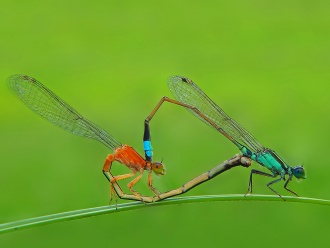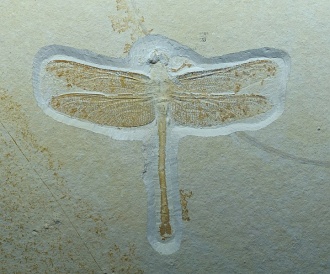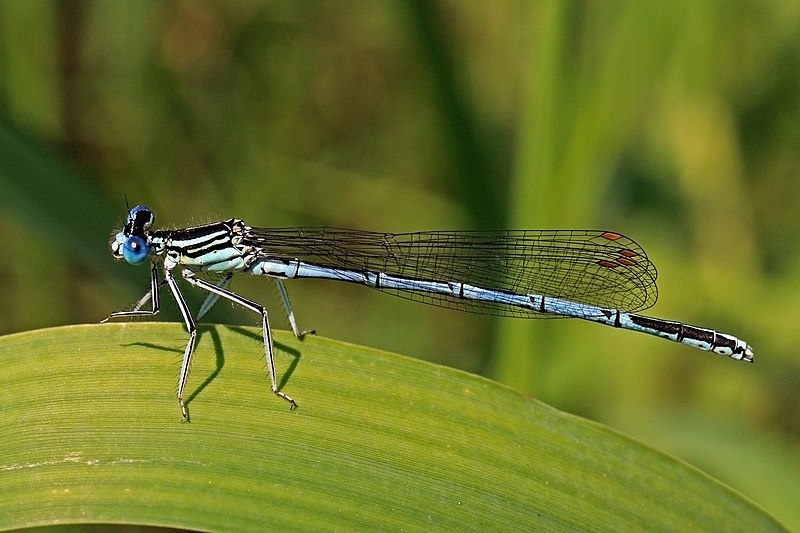This is the last article you can read this month
You can read more article this month
You can read more articles this month
Sorry your limit is up for this month
Reset on:
Please help support the Morning Star by subscribing here
I WAS sat by my tiny tin-bath garden pond feeding my fish. A common frog was hiding, but not well, among the pond plants when a spectacular visitor arrived.
I’ve written before about how even a tiny pond attracts wildlife of all sorts into your garden. This new visitor was an electric blue dragonfly.
What an amazing and beautiful animal. Dragonflies are insects in the suborder Anisoptera. The scientific name means “unequal-winged” and it was clear in my new visitor how it got that name.
The hind wings are shorter and broader than the forewings. The other outstanding feature is the huge ball-shaped eyes. It seemed there was hardly room on the dragonfly’s head for these two silver balls.
These huge compound eyes have 30,000 individual facets — the largest eyes for their body size of all animals. They are designed to look upwards. The eyes are so large that they take up most of the head, and 80 per cent of the brain deals with visual information. This gives incredible vision that encompasses almost every angle except right behind them.
The body is long and thin with a narrow waist near the top of the abdomen. It came to a sharp point at the very end of its body and this is its bum or anus.
Dragonflies are always found around water and eat just about anything — tadpoles, mosquitoes, fish, other insect larvae and even each other.
My visitor was a male and it looked pretty happy. As happy in fact as a dog with two cocks, because the male dragonfly does in fact have two penises.
This makes dragonfly sex pretty spectacular, as you will discover if you get the chance to see it.
The act of mating is very conspicuous event, easily recognised by the heart-shaped “wheel” formation of mating pairs.
Male dragonflies are very territorial and will ferociously defend their mating area from other males.
During battles, they will grab and bite each other’s wings and head, inflicting potentially fatal wounds.
Females visit the males’ territories along ponds, rivers and streams, and mate with the best fighters.
A male dances for a female by showing off his wings and zipping along the water, a behaviour that helps to communicate his quality and the quality of his territory.
To mate, the male first grabs a female by the back of her neck with claspers at the end of his abdomen — these structures actually fit into species-specific grooves in the female. From here, the pair can fly around together in tandem.

If the female is sexually receptive, she will lift her abdomen up to bring her sex orifice in contact with his penis, allowing the male to transfer his sperm.
In some species, the pair will remain in this wheel position for only a minute. Others, however, may stay in formation for several hours, while the male tries to use his second spoon-shaped penis to scoop out any sperm from other males the female may already have mated with.
After copulation, the male may immediately release his mate and fly away, or he may follow her around to guard her from other males while she lays her eggs in water.
In some species, the pair will stay in tandem during the whole egg-laying process.
Eggs laid, the dragonflies will go on to mate a few more times, until a month or so later they simply die.
The eggs hatch the following spring, and the nymph spends a few years as a fierce aquatic predator.
When the nymph is fully grown, it climbs up a plant — a water reed or similar — and the skin on the back splits, while the young adult dragonfly slowly emerges.
Newly emerged dragonflies are immature, being thinner and paler, and it takes a few weeks of feeding and sunny weather before they are fully mature.

There is something magical about dragonflies. They were some of the first winged insects to evolve, some 300 million years ago. Humans only developed 300,000 years ago.
My garden visitor’s wings were between two and three inches (5-7cms) wide but fossil dragonflies, from the time of the dinosaurs, have been found with wingspans of up to three feet. Some scientists suggest some may have been eight foot (2.5m) wide.
There are more than 5,000 known species of dragonflies and damselflies. I’m still struggling with identifying species.
The whole group is called the odonata, which means “toothed one” in Greek and refers to the dragonfly’s saw-like teeth.
They are really expert fliers that can fly straight up and down, hover like a helicopter and even mate midair. If they can’t fly for any reason they will starve because they only eat prey they catch while flying.
Dragonflies are useful creatures in controlling disease carrying small insects like mosquitoes. A single dragonfly can eat hundreds of mosquitoes every day.
They catch their insect prey by grabbing it with their feet. They are so efficient in their hunting that captive flies catch 90 to 95 per cent of the prey released into their enclosure.
Scientists have tracked dragonflies using tiny transmitters fixed to wings with a combination of eyelash adhesive and superglue.
They found that dragonflies travelled between eight and 100 miles a day. They usually travelled only every third day.
One question that has long puzzled me, and I think many others, is what is the difference between dragonflies and damselflies?

Damselflies and dragonflies are both members of the same family. Yet there are actually quite a few basic differences you can use to tell them apart, even if you aren’t sure which species you’ve seen.
In Britain damselflies are generally smaller than dragonflies, although some tropical species of damselfly can be very big indeed. Damsels close their wings while at rest, dragons keep their wings open.
Dragon and damselflies live in a variety of wetland habitats. They can be seen all over Britain from early to late summer but they always favour sites with good water quality as their nymphs grow underwater and require clear water in order to hunt. Various species favour different habitats, from fast flowing river specialists to still ponds and acidic bogs.
If you look at a dragonfly closely, you will see very complex vein patterns in the wings. This is a clue to their ancient lineage. They were flying around almost in their present form 250 million years ago, in the Triassic period.
Dragonflies are great indicators of water quality, choosing clean environments with water high in oxygen and free from pollution. Sounds like I’m getting it right in my tiny bathtub pond.
Now all I have to do is work out how to tell all those colourful species apart and put a name to the ones that are visiting my garden. Frankly, I’m too busy watching them have all that exotic poolside sex.












